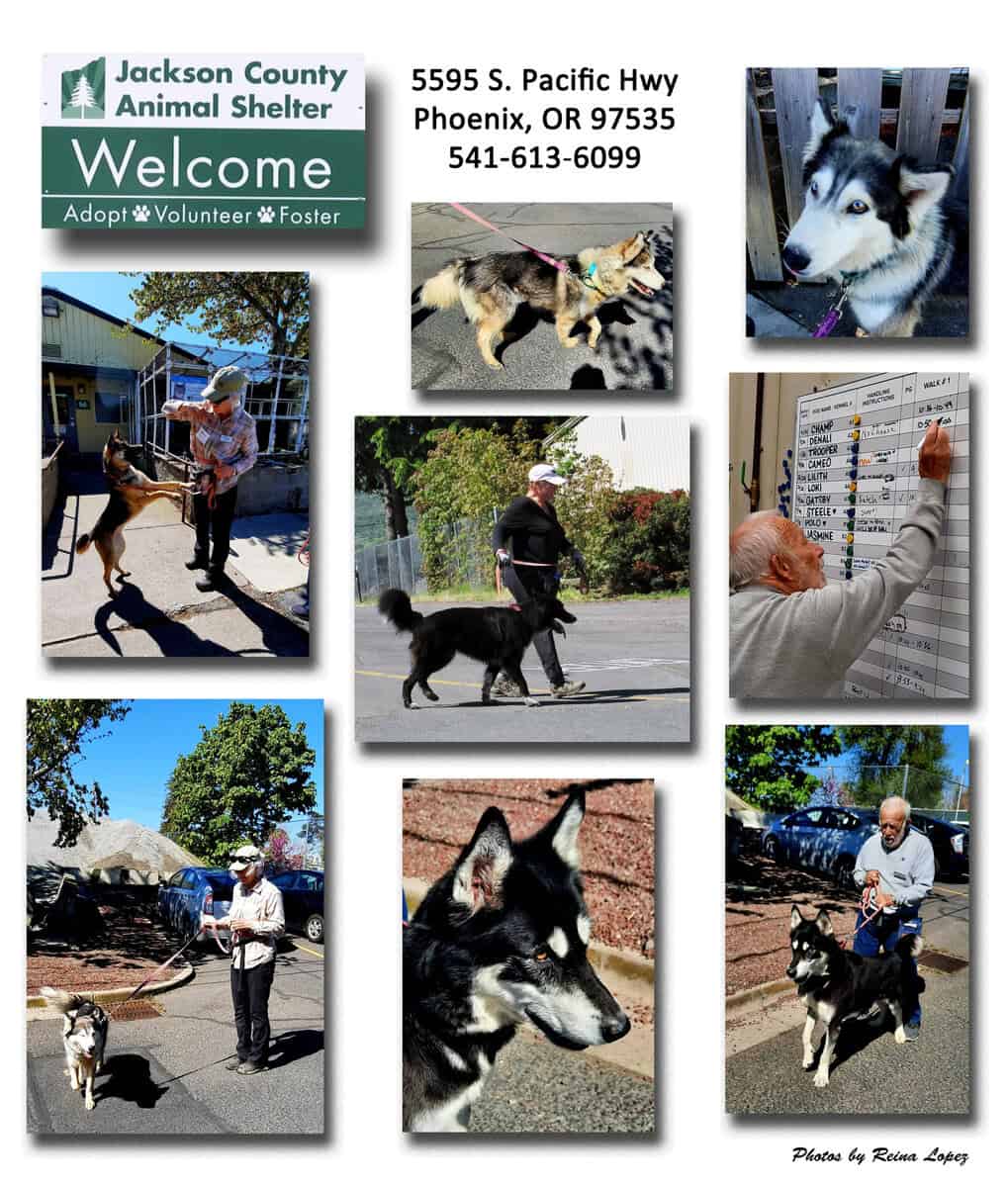Well, Well, Well
by Bob Buddemeier
A few weeks ago, The Complement was privileged to participate in the Crafts and Hobbies Opportunities Fair organized by Gary and Meryl Hanagami, co-chairs of the Wellness Advisory Committee (WAC). Exercise of the journalistic skills of writing and photography can be considered both as crafts and hobbies; I say “privileged” because we are not part of the group of activities and organizations for which the WAC is assigned responsibility. [For a photocollage of the Hobbies, Crafts, and Wellness Fair, see Views of Opportunity.]
Following the Fair, Gary produced an informative report on its outcomes – an achievement not nearly as common at RVM as I think it should be. This led me to ask him for an interview with the idea of writing more about the Fair. What I learned convinced me that the real story was not the Fair, but the recent development of the Committee and its mission.
Gary and Meryl had been here less than a year when they were recruited to head the committee by Saul Krimsly and Dolores Fisette, whose term was expiring at the end of the fiscal year. Saul was to assume the role as Secretary of the Executive Council and as fate would have it, ended up in a more functional position as Chair of the Dining Services Advisory Committee. The Hanagamis accepted the assignment because of their interests in wellness and fitness, and Gary’s experience with organizational management.
Their initial formative decision about the direction of the committee was that it would not simply be a channel for transmitting information based on residents’ or the department’s input, but that it would function proactively to connect residents with wellness activities and their benefits. This decision reached into every aspect of committee membership and function.
Before taking over the committee, Gary and Meryl had made a point of trying out all the Wellness Department class offerings and talking to other resident participants. Early actions included revising class descriptions to provide an informative summary scale of effort required, and developing a communication plan that included periodic articles in hillTopics. Gary secured new committee members for this project; Nan Trujillo took the lead, with other resident volunteers to follow. Concerning his recruiting efforts, Gary said “I only wanted people who were willing to do real work and were invested in their own wellness activities,” making it clear that his job was to provide conceptual and operational leadership, and not to do every task.
One task that was undertaken prior to the Hanagamis assuming the Chair of the WAC was their organization of RVM’s first Pickleball Friendly tournament between residents and staff. That involved not only the games themselves, but also the effort to inform and recruit staff members to play, and a program to coach them, originally provided by Tim Miller and now by WAC teammate Doug Godwin. The original event was a success, and is now in its second iteration for 2025. The process encompasses eight training classes put on by the residents for the staff, and will culminate in a round-robin tournament taking place in June with a second tournament planned for later in the Fall.
An ongoing effort that the committee is committed to is the expansion of the Summer Games to include events suitable for participation by those with ability limitations. Committee member Anne Irons is spearheading this effort. The pilot will target two events that have been designed for play by those with mobility limitations: corn bag toss, and snakes & ladders. A handicap system will allow fully abled players to compete on similar terms to those with limitations. We can expect these modifications to appear in the next round of the Games.
The Wellness Orientation Tour is a cooperative activity created and led by Diahana Barnes, Fitness Assistant, and supported by WAC volunteer Nancy Maxwell. Tours take place on the second Wednesday of each month; the team has conducted four so far. The tour is designed to provide newer residents an opportunity to experience many of the activities provided by the Wellness Department. On the tour you’ll interact with our hobbies and crafts groups, view our swimming pool, sauna and steam rooms, observe our still-being-constructed Personal Training Center, and conclude with a presentation at our HyrdoWorx therapy pool. During the beta test in December, members who attended commented, “I wish this was available when I was a new resident.” Ironically, in the first three tours of the year, most of our attendees were longer-term residents rather than our newer clientele. Interested in taking this tour? Sign up at the Manor’s front desk.
What else can we look forward to? Probably quite a lot. One of the Hanagamis’ first ideas was to establish “Wellness Advisory Captains” positioned in each of the major living venues (Manor, Terrace, Plaza, and Cottages) who would be a resource for those residents and champion wellness activities in those locations. However, as Gary ruminates, “…we’ve been so busy getting the major projects going, we’re missing the boat on creating this vehicle to enable better execution of those concepts. We’ll get this done sooner than later.”
Optimistic, but don’t count it out; under the leadership of the Hanagamis, the Wellness Advisory Committee is rapidly setting and achieving new goals. So don’t be surprised if one of their Captains appears at a community meeting espousing the Way to Wellness!


 I chose FOTAS (Friends of the Animals), a group of volunteers supporting the Jackson County Animal Shelter in nearby Talent because of its stated purpose “to improve the quality of life for animals in Southern Oregon by facilitating adoptions, medical care, education, and resources to our community.”
I chose FOTAS (Friends of the Animals), a group of volunteers supporting the Jackson County Animal Shelter in nearby Talent because of its stated purpose “to improve the quality of life for animals in Southern Oregon by facilitating adoptions, medical care, education, and resources to our community.” 


 If you’re looking for a place to exercise your writing skills, how about talking to Bob Buddemeier of The Complement to see what they have to offer. Feeling a bit stressed out lately? Seek out Nancy Ottis whose Meditation Group will offer a place to calm your mind, or how about asking Arlene Ching about the benefits of Rooftop Gardening? Curious about the origins of your family tree? Rita Derbas and her Genealogy group could Sherlock your way down the right path. And who would have thought Paul Ackerman’s Rogue Rover’s RV group existed? But he’s there as well. Feeling ambitious? How about starting or reactivating a group that is in need leadership? We have those too!
If you’re looking for a place to exercise your writing skills, how about talking to Bob Buddemeier of The Complement to see what they have to offer. Feeling a bit stressed out lately? Seek out Nancy Ottis whose Meditation Group will offer a place to calm your mind, or how about asking Arlene Ching about the benefits of Rooftop Gardening? Curious about the origins of your family tree? Rita Derbas and her Genealogy group could Sherlock your way down the right path. And who would have thought Paul Ackerman’s Rogue Rover’s RV group existed? But he’s there as well. Feeling ambitious? How about starting or reactivating a group that is in need leadership? We have those too! program. Or would you like to provide the homeless with a bit of comfort? Ruth Draper with Sleeping Mats for the Homeless may be right up your alley!
program. Or would you like to provide the homeless with a bit of comfort? Ruth Draper with Sleeping Mats for the Homeless may be right up your alley!

 Yaktrax is the name of a brand of wear-them-on-your-feet traction devices, but like Kleenex and Xerox the brand name has been generalized to refer to the whole class of such items, some of which are at least as good as the named brand. The picture illustrates one of many styles. What should you get and how do you get some? [Editorial Opinion] (1) Go to the online Amazon catalog, type Yaktrax into the search field and look until you find some that say they are for walking on snow and ice AND have a cumulative user rating greater than 4.5. Prices range from <$20 to the sky’s the limit. Search for “Yaktrax size chart” to relate your shoe/boot size to the S-M-L choices — but adjust your ordinary shoe size to account for the difference in outside dimensions between the shoe and you winter boot. (2) Not an online shopper? Take the boot that you would wear them on, go to REI and tell the salesperson what you want. And expect to pay a little more. Remember, concrete or tile surfaces may damage the Yaktrax, which in turn may damage wood or composition flooring.
Yaktrax is the name of a brand of wear-them-on-your-feet traction devices, but like Kleenex and Xerox the brand name has been generalized to refer to the whole class of such items, some of which are at least as good as the named brand. The picture illustrates one of many styles. What should you get and how do you get some? [Editorial Opinion] (1) Go to the online Amazon catalog, type Yaktrax into the search field and look until you find some that say they are for walking on snow and ice AND have a cumulative user rating greater than 4.5. Prices range from <$20 to the sky’s the limit. Search for “Yaktrax size chart” to relate your shoe/boot size to the S-M-L choices — but adjust your ordinary shoe size to account for the difference in outside dimensions between the shoe and you winter boot. (2) Not an online shopper? Take the boot that you would wear them on, go to REI and tell the salesperson what you want. And expect to pay a little more. Remember, concrete or tile surfaces may damage the Yaktrax, which in turn may damage wood or composition flooring.